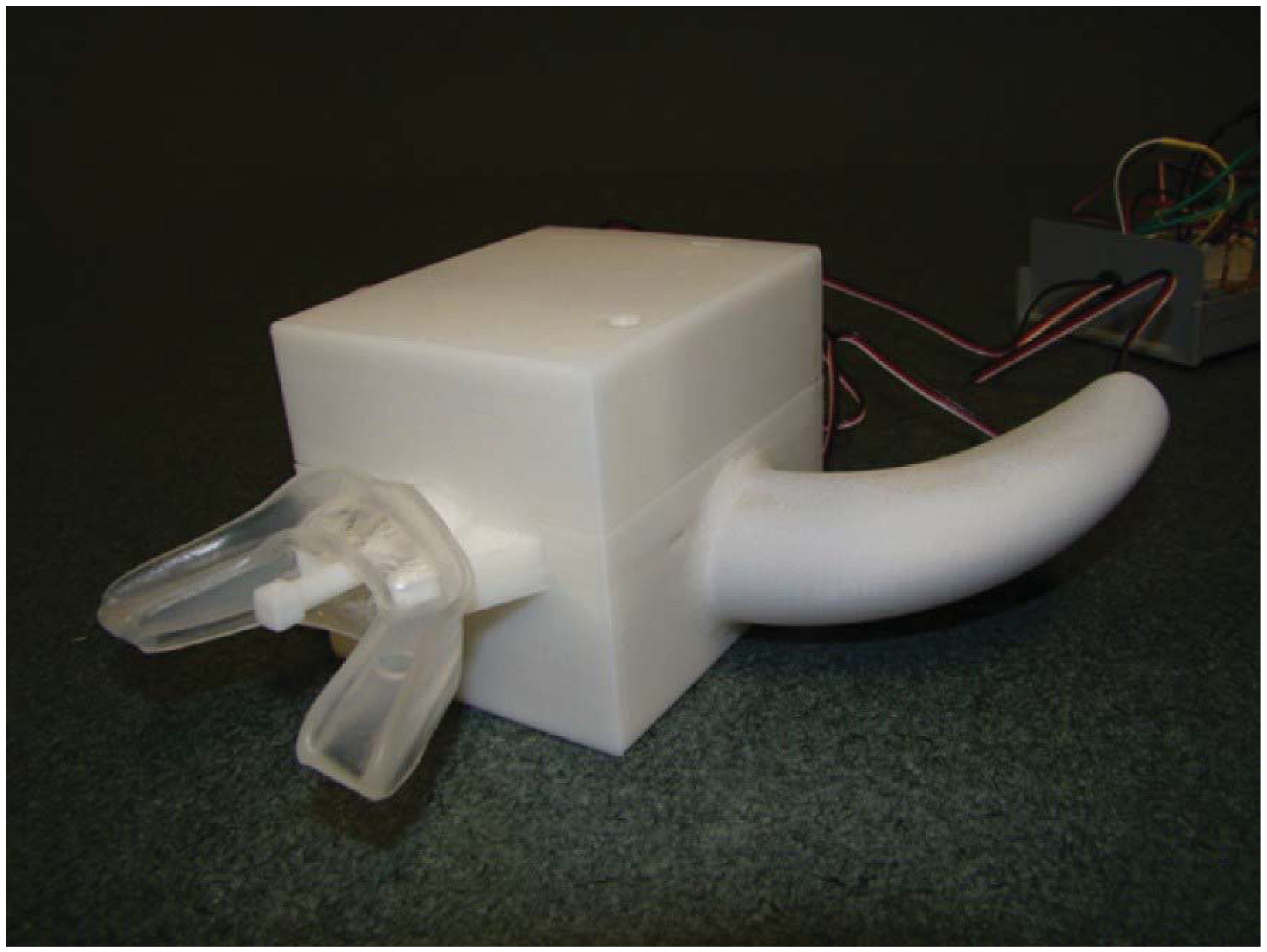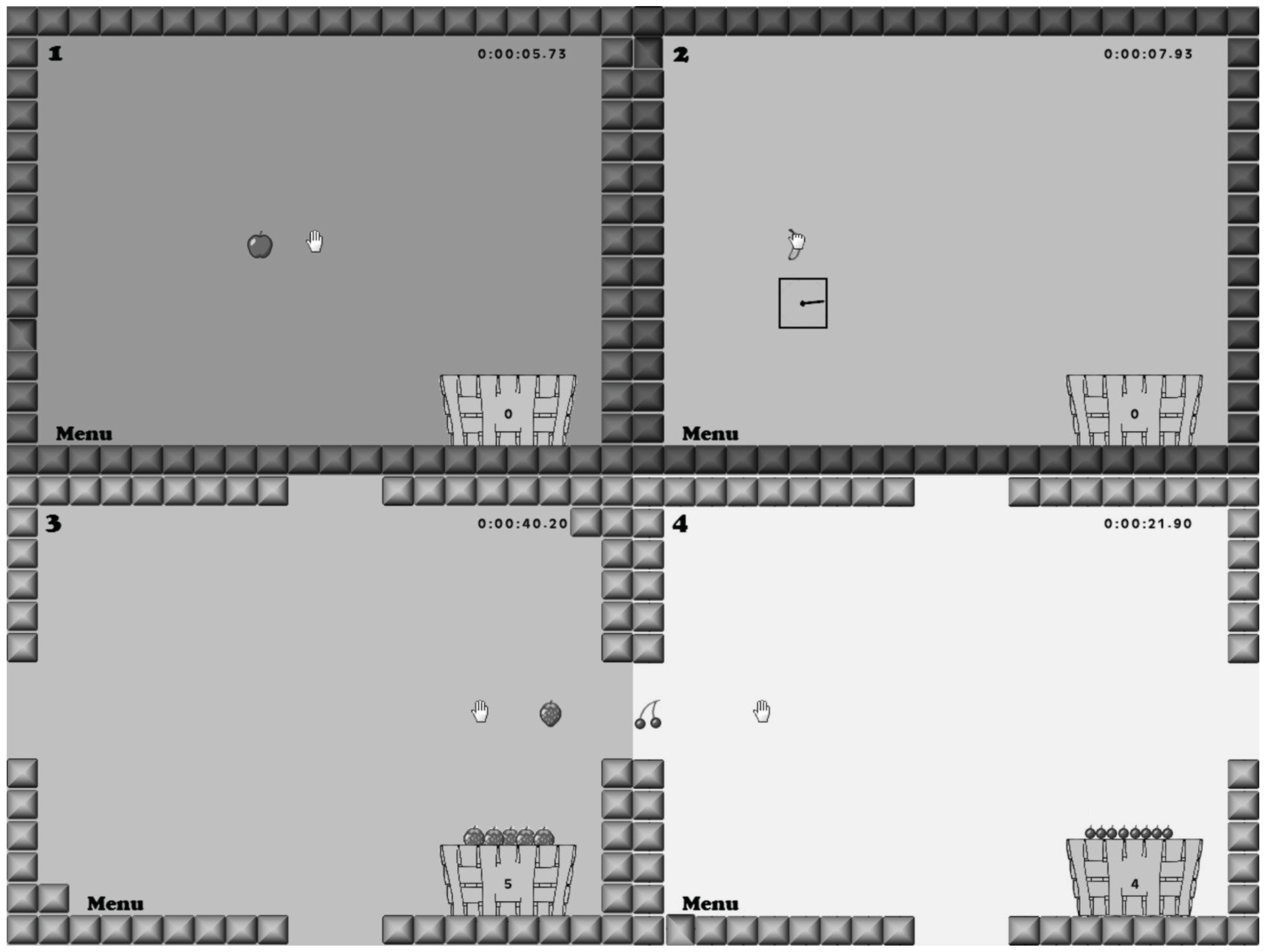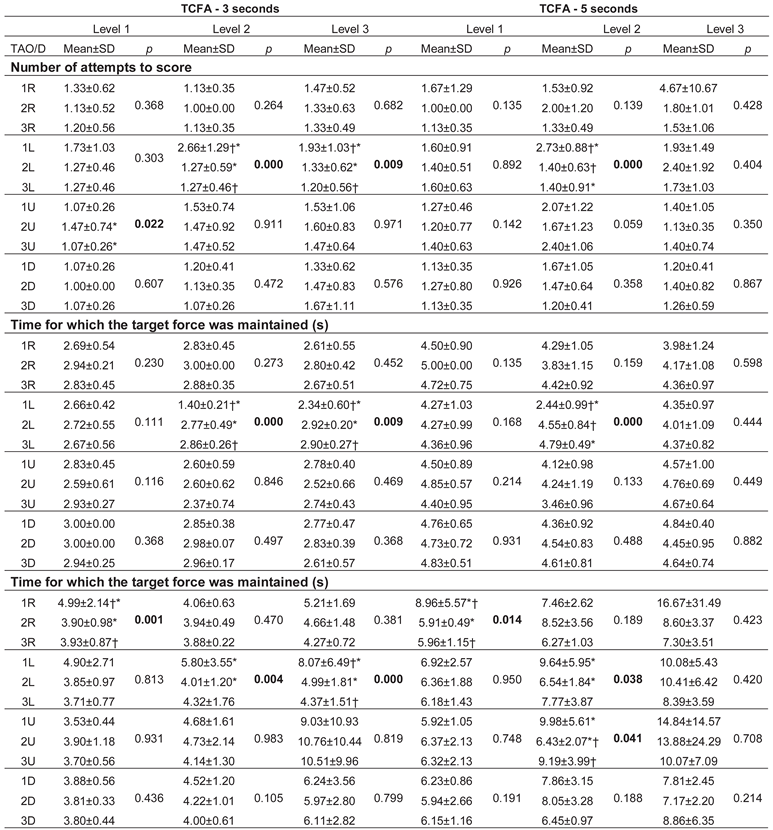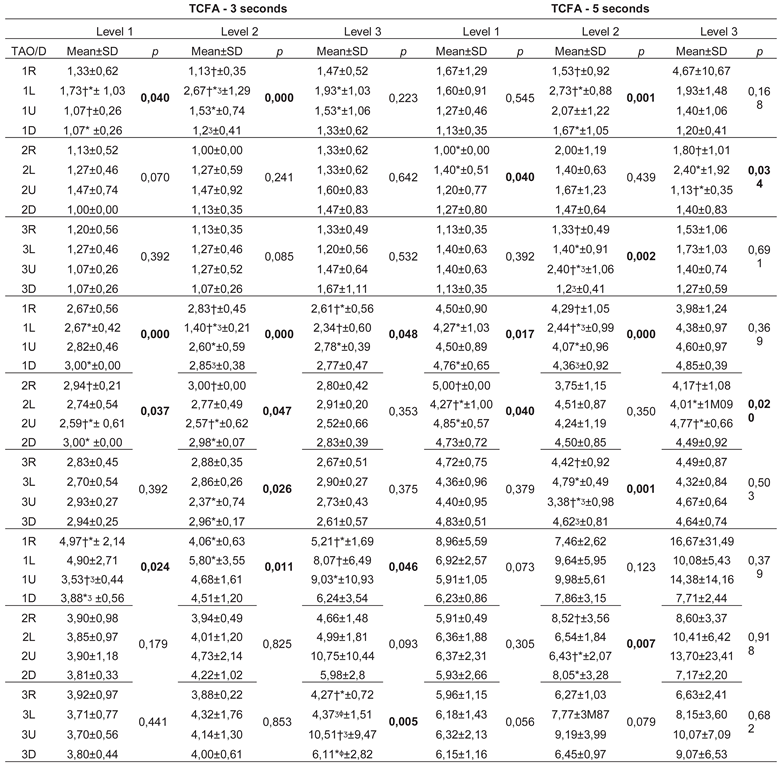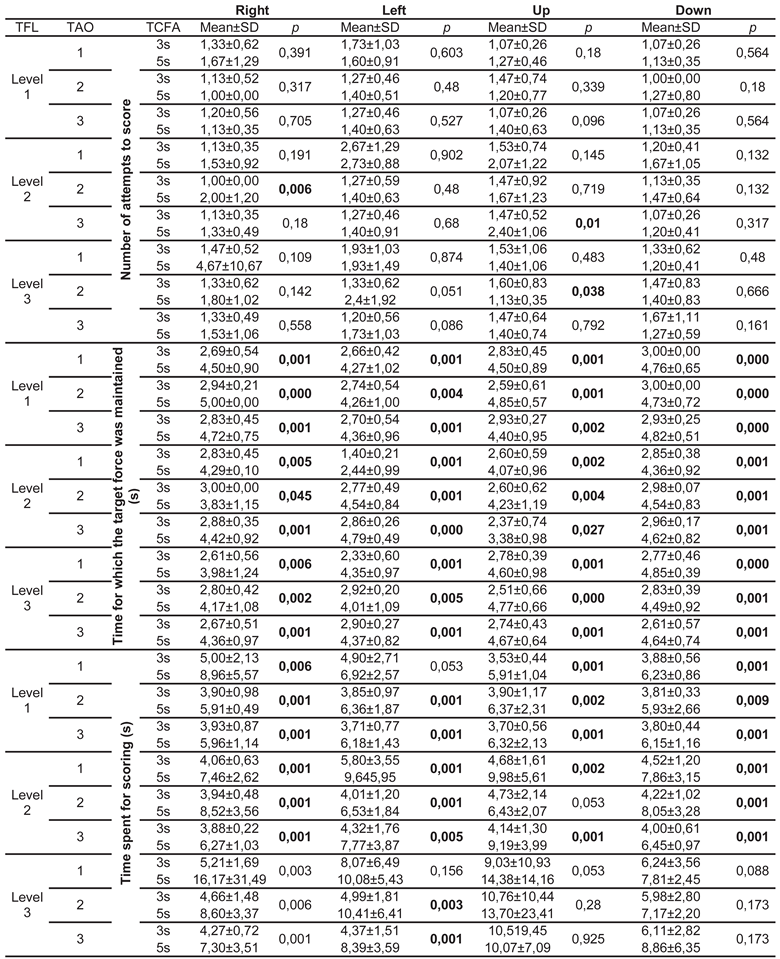INTRODUCTION
The tongue is part of the stomatognathic system and is essential for mastication, swallowing, sucking and speech (
Solomon, 2006; Guilleminault C, Huseni S & Lo L, 2016). It is composed of intrinsic and extrinsic muscles, all of which work synergistically. These muscles work concomitantly to produce changes in the position and shape of the tongue. Its complex musculature composed of muscle fibers in different directions, and its fine neurological control grant this organ substantial mechanical independence (Gilbert, Napadow, Gaige & Wedeen, 2007).
Many conditions, including oral breathing problems (Azevedo, Lima, Furlan & Motta, 2018), neurological diseases (
Steele et al., 2013; Hori, Ono, Iwata, Nokubi, & Kumakura, 2005), degenerative muscle changes (Lieshout, Steele & Lang, 2011;
Weijnen et al., 2000) or even age are associated with strength reduction in key orofacial structures including the tongue. The participation of these structures is necessary for the stomatognathic system to perform its functions, such as speech, mastication and swallowing (Cheng, Chan, Wong & Cheung, 2015).
Impairments in tongue strength may therefore result in performance reductions in swallowing (Yoshida, Kikutani, Tsuga, Utanohara, Hayashi, & Akagawa, 2006;
Stierwalt & Youmans, 2007) and speech (Jones, Crisp, Asrani, Sloane & Kishnani; Solomon, Makashay, Helou & Clark, 2017).
When there is impairment in the performance of the tongue, whether in its force or mobility, a series of exercises, isometric or isotonic, are indicated to improve tongue performance (
Rahal, 2012). Examples of exercises that improve tongue strength include pressing the tongue against the hard palate or pushing the tongue forward against a tongue blade (Clark, O’Brien, Calleja & Newcomb Corrie, 2009). Examples of exercises that improve tongue mobility include tongue anteroposterior movement and tongue lateralization (Berrentin-Felix, Silva & Mituuti, 2012). Thus, these exercises have proved to be effective for improving swallowing but do not appear to influence speech (
Ruscello, 2008).
A study, conducted in 2003, evaluated the effect of training in a novel tongue-protrusion task on corticomotor excitability as assessed by changes in electromyographic activity elicited in the tongue musculature and in the tongue cortical motor map revealed by transcranial magnetic stimulation. The findings suggest that performing tongue exercise is associated with evident neural plasticity and corticomotor excitability related to tongue musculature (Svensson, Romaniello, Arendt-Nielsen & Sessle, 2003). Another study (Svensson, Romaniello, Wang, Arendt-Nielsen, & Sessle, 2006) also found similar results. The aim of this research was to determine if one hour of tongue-task training is sufficient to induce signs of neuroplasticity changes in the corticomotor pathways. Corticomotor excitability was assessed by transcortical magnetic stimulation and the authors observed that the training is associated with plasticity of corticomotor excitability specifically related to the tongue musculature.
Tongue rehabilitation may be indicated in children. A study showed that children with mouth-breathing behaviour, from 5 to 12 years old, presented reduced tongue pressure (
Azevedo et al., 2018). For muscular strength rehabilitation to be successful, the patient must feel motivated during the exercises; otherwise, the treatment will be exhausting and lengthy, and its results impaired. Indeed, the current literature shows that motivation has a direct influence on tongue performance during motor training. A study with adults between the ages of 19 and 46 revealed a tendency toward higher performance in the monetary reward group compared with the control group, without monetary reward (Kothari, Svensson, Huo, Ghovanloo, & Baad-Hansen, 2013).
Motivation during therapy represents a constant challenge, since children and adolescents constitute the majority of the patients in Speech-Language Pathology clinics and live in a world surrounded by technology (Martins, Pinheiro & Blasi, 2008). The computer is part of most children’s lives, and its use in Speech-Language Therapy is exciting for the patient and essential for the therapist (Martins, Pinheiro & Blasi, 2008). Children and adolescents are naturally interested in digital games, and therapists aim to combine treatment with the interests of their target audience in order to increase motivation (Martins, Pinheiro & Blasi, 2008). The use of the same therapeutic techniques for all patients should be avoided. Even when individuals have the same diagnosis, their individuality should be considered when designing a treatment strategy, including their experiences, therapeutic needs, personal development and growth characteristics (Martins, Pinheiro & Blasi, 2008).
Due to new computer-based technologies, it is now possible to create improved rehabilitation methods that are more attractive and interactive, which may result in a better adherence to a therapy regimen and provide the professional with a better follow-up of patient changes (
Souza, 2011). Although few studies are available, most professionals working in Speech-Language Pathology clinics state that computer games can optimize treatment by giving the patients better motivation for treatment (
Souza, 2011).
Non-conventional devices aiming to stimulate and consequently increase user involvement (
Machado, 2010) may therefore be able to help in the field of swallowing rehabilitation (
Souza, 2011).
When a subject plays a computer game, it is possible to increase their level of motivation during training relative to traditional therapy (
Kothari et al., 2014). The use of games triggers a learning system based on positive reinforcement that is provided when the correct movement is executed. This system can provide rewards, improve the retention of actions that guarantee the reward, facilitate changes in action planning and improve the generalization of skills (
Schmid, 2009). These systems are called Serious Games and are designed to entertain players while simultaneously trying to modify aspects of their health behaviours (
Machado, 2010).
Recent research has explored the use of computer games for treatment of tongue function. Miyauchi, Kimura, and Nojima (2013) developed an interactive tongue training system especially for children with Down syndrome, named SITA (Simple Interface for Tongue Motion Acquisition). This system is coupled to a computer game and conducting a training for tongue mobility. The authors verified that SITA was applicable for tongue therapy.
Kothari et al. (
2014) evaluated a training method called the Tongue Drive System (TDS), which was coupled to a computer game played with the tongue. Some findings of the study were that the performance level in the tonguedisabled group was lower than in the healthy group and this training was feasible in tonguedisabled patients The authors claim that this method represents a new tool for the rehabilitation of patients with changes in tongue motor function.
Our group has developed a new method for tongue force and mobility rehabilitation based on the use of a non-conventional input device for digital games. As described in a pilot study of nine young, healthy adults, the joystick device is inserted into the oral cavity and is driven by tongue movements, which the individual can use to play digital games (Furlan, Santana, Bischof, Motta & De Las Casas, 2019). This novel method is intended to improve patient adherence to treatment, offering a more pleasant and dynamic approach to therapy. A larger feasibility study with children is required before using the method for rehabilitation and it will involve testing this method in subjects with and without tongue force and mobility impairments. The purpose of this study is to investigate the motivation and the effects of: tongue movement direction; resistance force level; repetition number and sustained tongue contraction duration on tongue motor performance in healthy pre-teen children using computer games. The investigation of the performance and motivation of healthy participants using the tongue-controlled joystick device and computer games, will help to understand the feasibility of this device for eventual clinical use. This study also aims to establish measurement parameters and obtain feedback to improve or adjust the device.
METHODS
A cross-sectional observational study was conducted. The research was approved by the Ethics Committee at UFMG under the number 18614313.3.0000.5149. The non-probabilistic study sample was composed of 15 children, all of whom were students at a public school in Belo Horizonte. All children agreed to participate in the research and signed the terms of agreement, as did their parents or legal guardians, accepting and signing the informed consent terms.
Participants included six boys and nine girls between the ages of 11 and 13 years (M = 11.66 yr; SD = 0.82), with normal tongue force and mobility, presenting all of the central and lateral incisors, without cognitive impairment that could interfere with the test, and no visual impairment, according to the report of the parent or guardian and the teacher. The data were verified in an interview with the participants. Individuals who could not tolerate the instrument in the oral, cavity or who could not perform all of the required series were excluded from the study. Only individuals with full agreement as to having normal force and mobility in the clinical evaluation participated in the study. Altogether, 43 pre-teen children (14 boys and 29 girls) were evaluated, of these, just fifteen exhibited tongue force and mobility without any alteration. Twenty four individuals were excluded because they had decreased tongue force, two presented alteration in the lingual frenulum and two present alteration in the lingual frenulum and decreased tongue force. Minor alterations were considered to exclude the participants, because at first moment it was important for the instrument to be tested by children without any tongue difficulties, and after verify the effects of these small changes on children’s performance.
The individuals were evaluated by two Speech-Language Pathologist teachers with extensive clinical experience in Orofacial Myology and a senior Speech-Language Pathologist student. The professionals used a Tongue Evaluation Protocol, which is based on the previously described MBGR Protocol (Marchesan, Berretin-Félix & Genaro, 2012).
At first, an instrument similar to a joystick controlled by the tongue was inserted in the participant’s oral cavity. The instrument is composed of a mouthpiece with a central control rod that works as a joystick moved by the tongue, four tension springs for resistance force, and two Hall effect position sensors to capture the two-axis angular displacement of the rod and transmit the resulting data to a notebook (
Figure 1). All components were mounted in a 3D printed plastic box. Before usage and between subjects, the equipment was sterilized, the mouthpiece was discarded, a new mouthpiece was inserted, and the joystick was entirely wrapped in a PVC film. After that, the mouthpiece was fitted into the mouth and the participant was instructed to move the control rod with the tongue in the directions requested by the games.
The player needs to exert proportionally higher forces with the tongue, pushing the control rod for each direction. One analogue sensor captures up-down movements, and the other analogue sensor captures left-right movements. A data acquisition device then converts the signal to a digital format and delivers it to a USB drive. Software transforms the signal from both directions into a cursor movement, much like a mouse controller does. The instrument was calibrated using calibration weights, and the maximum expanded uncertainty of the force measurement was less than 3%. The calibration curve was non-linear, and the calibration was performed on 5 points.
The computer games were developed using Gamemaker
® software (YoYo Games Dundee, UK) in such a way that the speech-language pathologist could control a variety of parameters, including the time during which the force is maintained, the necessary type of muscle contraction (isotonic or isometric), the direction of motion, the level of force and the number of moves. The games (
Figure 2) consisted of targets, represented by fruit, which appear on the screen and must be reached by the user, represented by a hand image, by moving the control rod with the tongue. In force training games, the user must hit the target and maintain the position for the stipulated time in order to score, thus promoting isometric muscle contractions.
Each child participated in one session with approximately 20 minutes duration. The games consisted of six activities that combined time for continuous force application on the target (TCFA) (the period during which the individual is continually pressing the control rod of the joystick) of 3 and 5 seconds with the target force level (TFL) (the force exerted by the tongue on the control rod of the joystick) of 0.5 N (level 1), 1 N (level 2) and 2 N (level 3) (N = Newton). The order of the activities was randomized. Each activity had three targets requiring different motion directions (the direction of the applied force imposed by the patient with the tongue on the control rod). The motion directions were to the left, to the right, up and down, in that order. There was a rest period of one minute between each activity. After the games, the participant was asked about the comfort of the instrument, the ease of the movements and the interest in the game. The participants were interviewed and the researcher wrote down the answers (
Figure 3). The remaining questions were answered by participants employing visual analogue scales in which the scores ranged from 0 (lowest score) to 10 (highest score). The participants were asked to report their motivation, fun, pain and fatigue using these scales. These questions were based on two studies (Kothari, Svensson, Huo, Ghovanloo & Baad-Hansen, 2012;
Kothari et al., 2013) that also evaluated the use of an oral apparatus for rehabilitation of the tongue associated with digital games.
The computer games provided with the instrument generated a performance report. This report includes participant data (name, age and date), the name of the game, the parameters stipulated by the Speech-Language Pathologist for the game and the patient performance data. The following data were collected for the present study: the number of attempts to score (NAS), number of times the participant reached the target, even if he/she could not maintain the contraction for the required time period; the time for which the target force was maintained (TTFM), average time, in seconds, that the individual held the control rod for each target; and the time spent for scoring (TSS), which is the time, in seconds, needed by the participant to score. Each of these three variables of interest was associated with four game parameters, as shown in
Table 1.
Statistical analysis was performed using SPSS (Statistical Package for the Social Sciences, version 17.0). In the first stage, a descriptive analysis of the data with the percentage of measurements was performed, including the central tendency and dispersion. In the second stage, a non-parametric Friedman test (multiple comparisons) was performed to assess the crossing of the variables. In the third step, in case of significant data in multiple comparison tests, the Wilcoxon test (pair comparison) was for comparisons among peers. A confidence level of 95% was considered significant for all analyses
RESULTS
When analysing the participants’ performance according to the order of the target appearance during the game (
Table 2), all comparisons differed significantly with the exception of Level 1 for the variable TTFM. It was observed that the second and third targets were more difficult to reach, requiring more NAS, shorter TTFM and longer TTS.
When comparing the direction of movement (
Table 3), it was found that the three variables of interest showed significant associations. There were more NAS and shorter TTMF for left and up. The individuals also spent more TSS for down and right directions.
Significant differences were also observed in the target force levels (
Table 4). All variables showed significant associations and the highest was the variable TSS. An increase in the variables NAS e TSS and a decreased in the variable TTFM was observed in the third level target to the others. According to the data collected for TCFA (
Table 5), few significant associations were observed for the NAS variable, and more associations were seen for the TSS variable. The variable TTFM was found to be significant in all associations. The 5 s games required more NAS, longer TTFM, and longer TSS than 3 s games in relation to target force level (0.5N, 1N, 2N).
As for the comfort and feedback questionnaires (scaled 0-10) about the instrument, the average values were 9.78, 9.63, 2.59 and 2.86 for the subject-based reports for “motivation,” “fun”, “pain” and “fatigue,” respectively. Eleven of the 15 participants (73.3%) said that they found the game easy to play, while three (20.0%) found it a bit hard, and only one (6.6%) found it difficult. When asked if they would like to play the game again, 14 (93.3%) participants answered yes. All of the individuals tolerated the instrument in the oral cavity and were able to perform all of the required series.
DISCUSSION
The results of this study provide an overview of the performance and motivation of pre-teen children without tongue impairments while playing computer games with a new instrument. The analyzed variables were NAS, TTFM and TSS. These three variables were analyzed according to the target appearance order, the different directions of movement, the TCFA (3 or 5 s) and the TFL (0.5 N, 1 N or 2 N).
A significant difference in all aspects of evaluation was found for the NAS variable. It is worth mentioning that the fewer attempts the individual needed to successful reach the target for the game, the better was their overall performance score.
Regarding the order of appearance of the targets, the second and third targets in each direction required fewer attempts than the first, which can be explained by the effect of learning on the task. In a study that presented preliminary tests of an intraoral apparatus triggered by the tongue as an input device for computers, it was observed that the individuals showed increasingly improved performance over three consecutive tests (
Kothari et al., 2012). Another study also found improvements over time in the performances of individuals for games performed with the tongue over time (
Huo & Ghovanloo, 2010).
Interestingly, the participants showed a greater number of retrials in the left direction. This is in contrast to existing literature in adults, which has suggested that there are no significant differences between the left and right directions in terms of tongue force (
Clark et al., 2009). It is important to note that this study was performed with adults and a nine-session lingual training was performed, which may justify this difference.
Regarding the performance of the participants in the TCFA, it was observed that, from 3 to 5 seconds, there was also a significant increase in the NAS. This can be explained by the challenge of maintaining the contraction for a longer period. There is no default value in the literature for the duration of contraction in exercises to gain strength, with values ranging from 1 s (
Clark et al., 2009) to 20 s (
Cunha & Silva, 2012). In clinical practice, this time is gradually increased throughout the treatment (
Rahal, 2012).
Comparing levels 1 and 2, 1 and 3 and 2 and 3, there was an increase in NAS to the third level, which may be explained by the increase in the force required to achieve these targets (2 N). In a study with adults, strength training sessions were held with 288 repetitions of tongue protrusion and loads of 1 N to 3 N. Individuals used their tongues to press a force transducer fixed on a shaft and positioned at 2 cm (cm = centimetres) in front of the upper lip. The duration and strength level were given on the computer screen as a visual feedback. The authors, in contrast with the present study, found better performance in an activity with 3 N than with 1 N and noted that the performance improves the longer the 3 N activity is done. The authors attribute this finding to the motivational factor, which is higher in activities with more difficulty (
Kothari et al., 2012).
Regarding the variable TTFM, all investigated parameters also showed an association: the higher the TTFM, the better was the individual’s performance, as the individual was able to sustain the isometric muscle contraction longer. As for the performance in the order of appearance of targets, it was observed that the second and third targets of each direction had higher TTFM levels. This indicates that the participants showed better performance for the second and third targets, which may also be explained by a learning effect.
The subjects were able to hold the leftward tongue contraction for a shorter time than the other directions. Again, this is likely because the first targets in the games always appeared on the left side and because individuals tended to sustain the movement for less time for the first target, as they were still getting used to the required time of contraction.
When analyzing the levels of the game, participants were found to have a lower average TTFM in the third level compared to the other levels. This may be due to the increased force used and difficulty in maintaining the contraction for a longer period.
Regarding the analysis of the variable TSS, significant differences were found for all investigated variables. This time increase may be a consequence of the large number of trials or a more sustained muscle contraction time. In the performance analysis of the participants in order of the target appearance, it was observed that the first target requires more TSS when compared to the second and third targets. This observation is likely because a higher NAS was seen in the first targets given the learning effect.
Individuals needed less time to score the targets downward in relation to the other directions, which can be explained by anatomical differences in lingual muscles. Indeed, it seems that it is easier for the tongue to produce a sustained downward force, being downward movement easier due to genioglossus involvement. Peer data analysis also revealed differences in the TSS values between the right and left directions, with the right presenting longer time. No explanations have been found in the literature about this fact, so further research is suggested to verify the effect of laterality and chewing preference side.
As to the performance of participants on the TCFA, it was noted that an increase from 3 to 5 seconds resulted in an increase in the TSS. It was expected that an increase in the duration of contraction would result in a corresponding increase in the TTFM and TSS because these variables are directly dependent on the stipulated contraction time. Therefore, it is the increase in NAS that shows performance differences between the exercises performed and the different TCFA levels. As for the difference between levels 1, 2 and 3, there was an increase in the TSS at the third level in relation to the others, which again could be explained by the increased force required to reach the target. The increase in this force generates a greater degree of difficulty and even fatigue, which in turn generates a greater number of attempts and results in an increased time for scoring.
Slyper, Lehman, Forlizzi & Hodgins (2011) developed a joystick activated by the tongue to be used by actors to produce speech by pressing the joystick buttons, which demanded a force from 50 gf to 150 gf, equivalent to approximately 0.5 N to 1.5 N. The subjects were asked to do as many trials as possible in ten minutes. After testing the instruments, 24 participants aged 18 to 58 years reported their fatigue level as a 3 on a scale from 0 to 7 (
Slyper et al., 2011).
Some studies have measured tongue fatigue in speech and swallowing tasks. Makashay, Cannard & Solomon (2015) tested the assumption that speech is more susceptible to fatigue than normal in persons with dysarthria. A group with twelve adults with Parkinson’s Disease and thirteen neurologically normal adults produced sentences with multiple lingual targets before and after one hour of fast syllable or word productions and both groups reported fatigue.
Solomon (
2000) induced tongue fatigue in eight neurologically normal persons and examined changes in speech. The fatigue task consisted of repeated cycles of 6 seconds of sustained maximum voluntary contraction and 4 seconds of rest until 50% of maximum strength could not be achieved for three consecutive cycles. Participants then produced speech that was weighted heavily with lingual-palatal consonants. The analyses of the speech revealed a statistically significant deleterious effect of induced tongue fatigue on speech precision. Kays, Hind, Gangnon & Robbins (2010) tested the hypothesis that eating a meal reduces tongue strength and endurance in healthy old and young adults. They concluded that the both groups demonstrated reduced tongue strength and endurance after dining.
The feedback questionnaires revealed high levels of comfort, motivation and fun and low levels of pain and fatigue in the group of individuals studied. Furthermore, over 70% of the participants found the game to be easy and approximately 93% reported that they would like to try it again. In two previous studies (
Stierwalt & Youmans, 2007;
Souza, 2011) in which individuals used a tongue force rehabilitation system associated with digital games, the authors were able to observe, also through questionnaires, that the participants considered this training more fun, less painful, less tiring and more motivating compared to traditional training.
The proposed new method offers advantages compared to other technologies in the market for tongue force rehabilitation. It offers patients realtime feedback, allows adjustments according to specific needs, and makes the process more interesting. Eventually, the devices could be connected in order to allow for competition between participants.
Future research should address clinical feasibility by testing younger children in addition to children and pre-teens with tongue-function disorders, children with oral myofunctional disorders, such as mouth breathing, neuromotor dysfunction, and other pathologies that affect tongue force. At this stage, some other refinements can be implemented, such as randomizing the order of meaning/direction.
CONCLUSIONS
The performance of pre-teen children with adequate tongue force using a new method for tongue force rehabilitation was analyzed. The proposed device can provide an added incentive for rehabilitation. The tasks involved in playing the games reproduce basic exercises typically used in the clinical practice of orofacial myology, with the added motivation of the computer games. The results suggest that healthy individuals with normal lingual structure and function are able to successfully perform the games, but those with longer durations of sustained contraction (5 seconds) and the most required force (2 N) are the most difficult. Leftward and upward movements were more difficult than rightward and downward movements. Performance improved over several trials, being observed a learning effect. It is observed that there is influence of contraction duration, force, direction and number of trials on children’s performance using the method.
